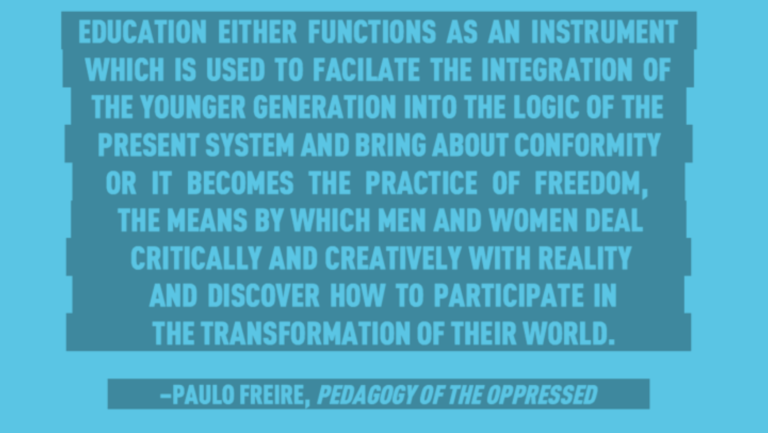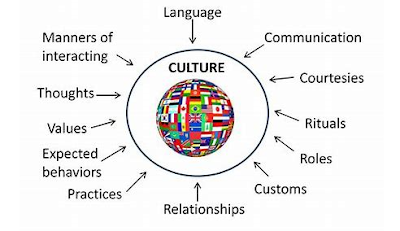Out of the Shallows: Four Principles for Diving Deeper into Culturally Responsive Practices
The continued presence of the racial achievement gap is not merely an indication of how poorly individual students perform, but more of an indication of a school’s lack of effectiveness to teach certain students. True or false? Depending on how one answers the previous question ultimately depends on one’s understanding of the importance of culturally responsive practices in the classroom. Critical to the reform of negative educational opportunities, outcomes, and experiences for marginalized students is the presence of effective and culturally responsive educators in the classroom (Banks, 2019; Gay, 2010; Ladson-Billings, 2009). Unfortunately, many culturally conscious efforts fall short of meeting the needs of diverse students because many educators have not had practice in developing sound, in-depth principles of culturally responsive teaching. If teachers are ever going to get real about the equity efforts in education and become truly responsive educators, they have got get out of the shallows, dive…
So, You Want to Be an Anti-Racist Educator? Let’s Get it Right So We Don’t Keep Missing the Mark
In the past few weeks, I have felt like I lived in an alternate universe. As a longtime advocate for equity in schools, and an unapologetic Black educator who openly (in person and online) speaks out against racism, I have not always been everyone’s “cup of tea.” In the classroom, I was often reprimanded by colleagues and administrators for my so-called “argumentative” disposition when I questioned inequitable and racist practices in my schools. In my personal relationships, some of my White friends (and sometimes Black) warned me that my stance drives people away, reminding me how I could “catch more flies with honey.” All of that has changed, literally overnight. As of the last few weeks, I have had more open, honest, and productive conversations with White women, men, and educators of all backgrounds on race and equity than ever before. As a whole, those of us formally silenced or…
Teaching for Social Responsibility: Facilitating Critical Conversations in the Classroom
As the political waters around us grow murkier and murkier, the fear that freedom of speech is under attack run rampant without any critical reflection as to its validity. Teachers, who still claim a sense of social responsibility to develop students into active global citizens are looking for ways to engage in critical dialogues with students without sinking into these torrential muddy waters. Although some teachers have chosen to engage with their students without filter, doing so could have devastating consequences on an educator’s career and students’ development. On the other hand, some teachers are so tight-lipped about issues in the world for fear of being seen as “too political,” that critical conversations about issues in our society are nearly non-existent in their teaching rendering them irrelevant in the eyes of many students. Today, let’s put some balance between these two extremes. Teachers, if we want students to grow up…
It’s 2019! Time To Get Rid Of Racism In Our Schools!
After a year of a Texas superintendent’s remark about not being able to “count on” black quarterbacks, a Louisiana teacher’s post insinuating that people of color should “quit acting like animals,” and Idaho teachers dressing up as ‘Mexicans’ and a Make America Great Again (MAGA) wall; 2019 needs to be decidedly different. This new year, let’s begin the process of becoming more culturally competent teachers and schools. While teacher populations remain 80 percent White, student populations continue to grow increasingly more diverse. When research tells us that many White teachers come into the classroom having little to no social interaction with people of color throughout their lives; this lack of exposure leads many teachers to be ineffective with culturally diverse students. As teachers and administrators continuously demonstrate their lack of racial competence, those in charge of educating all students need to begin to hold these teachers accountable for this lack…
3 Myths About Multicultural Education That Must Be Dispelled
Want to know one of the fastest ways to clear a room full of educators? Mention the words diversity, inclusion, urban, culture, race, or multicultural. Want to clear a room even faster? Mention all of these words at once when talking about how to improve the learning experiences of our nation’s students, and you may be the last one standing in many educational settings. None of the words mentioned above are ugly, vile, or demeaning in nature. Yet, the amount of disdain and discomfort that can arise when these well-meaning words are brought up lead me to believe there is much misinformation surrounding these words that need to be addressed. For the sake of brevity, I cannot delve into the myths surrounding each of the above words. However, frequent and persistent myths surrounding what multicultural education is, who it is for, and how it should be used, will be addressed…
Welcome to Amerikkka
After numerous bombs were sent to political opponents, then an unsuccessful attempt to attack a predominantly Black church was thwarted only to find two victims at a local Kroger, and 11 worshippers at a Jewish synagogue were gunned down; I must pause to address the prevalent (but false) notion that “this is not who America is.” I know that history is not the class that many of us remember fondly, however, some history will do some good right now to help us demystify the idea that there has been a supposed resurgence of hate-filled crimes in America. History will tell us that these recent acts of hate are not random aberrations committed by deranged outsiders. No, history will tell us that not only are these recent acts of hate just par for the course, but they are also the underlying symptoms of the hatred that has ALWAYS been in America.…
Culture Shocks
The complex realities of culture and the role it plays in the way we think, act, and what we value are critical understandings for teachers to be effective educators of culturally diverse students. Teachers must be well-versed in not only the most visible manifestations of their student’s cultures such as foods, holidays, and language; but also in the implicit forms such as interactional patterns, values, and beliefs. When taking a critical look at how our schools reflect the various cultures of the students in its charge, it is painfully clear that many of our K-12 schools are stuck at the basic (and smallest) level of understanding of culture. Many schools tout their superficial references to student’s food, clothing, holidays, and customs as sufficient in including the diverse cultures of their students. This is a great start, but only a start. Schools can often neglect the deeper levels of interactional patterns…
Unlearn Racism
Many educators avoid topics surrounding race and racism in their classrooms. Topics as these can be seen as scary, controversial, or inappropriate for the educational environment. Many teachers may feel it is “not my job” to bring up or discuss issues of race in their classrooms. But why? When research indicates that children as young as 3 years old “begin to show signs of being influenced by societal norms and biases and may exhibit “pre-prejudice” toward others on the basis of gender or race or being differently abled” (Derman-Sparks, 1989, p. 2), and teachers begin to display their own implicit bias towards students of color beginning in preschool (Young, 2016); it seems imperative that teachers must address issues of race and racism in their classrooms because, like it or not, it’s already there. As a kindergarten teacher, I have been witness to many issues that revolve around race and racism…
Rethinking Columbus
One of the most important aspects of multicultural education is the curriculum. I cannot stress this enough. In today’s standards-based (or obsessed) curriculum it is crucial to implement multiple perspectives across ALL disciplines. One of the main goals in choosing a curriculum for a multicultural approach is to make sure what you are teaching is ACCURATE and COMPLETE. We are doing our students a great disservice by not presenting the curriculum in this manner. Our student’s ability to develop critical thinking skills is severely diminished when these components are overlooked. Too often we settle for the “safe” approach and truth loses out. One example of this is how we (still) teach Christopher Columbus (among many others). Many of the views surrounding the history of Columbus come from a very Eurocentric and one-sided perspective. In multicultural education, we must examine events from multiple perspectives in order to get a clearer picture…








